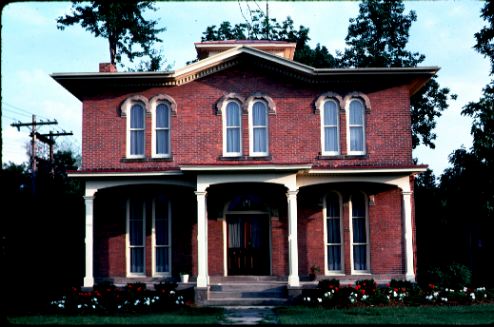
Photograph by Geoffrey Blodgett
Oberlin's ranking Civil War hero, Gen. Giles Shurtleff, built three substantial homes in the village during the postwar years. This is the first of them. Shortly after the war, Colonial Hall -- one of the earliest college dormitories -- was dismantled to make way for the erection of the Second Congregational Church (where the Conservatory of Music now stands). A choice block of residential sites, called College Place, was opened around the church, and here General Shurleff's red brick Italianate villa went up in the summer of 1866.
James Monroe bought the house from Shurtleff in 1870 upon his return from Rio de Janeiro, where he had served as Lincoln's consular representative during the war. [Monroe's previous home was the Monroe Bosworth House.] Monroe was Oberlin's leading antislavery politician. In 1865 he married Rev. Charles G. Finney's daughter Julia and turned down a bid from the faculty to succeed Finney as president of the college. He served five terms in Congress as a Republican across the 1870s, and after that taught history and political economy at the college. A charming and knowledgeable sage, he was among the most popular professors of his day.
Sixty-two years after the death of this much-honored man, when the construction of the new conservatory obliterated College Place, the Oberlin Historical and Improvement Organization saved Monroe's house by moving it 100 yards south to its present site. It stood boarded up and empty for 20 years, luring vandals and breeding legends, but in the early 1980s O.H.I.O. took steps to make it a living place again. Its restoration was completed just in time for Oberlin's sesquicentennial year, 1983.
(Blodgett 99-100)
![]() Click
here for information about the tour of Monroe House that the Oberlin
Heritage Center offers.
Click
here for information about the tour of Monroe House that the Oberlin
Heritage Center offers.